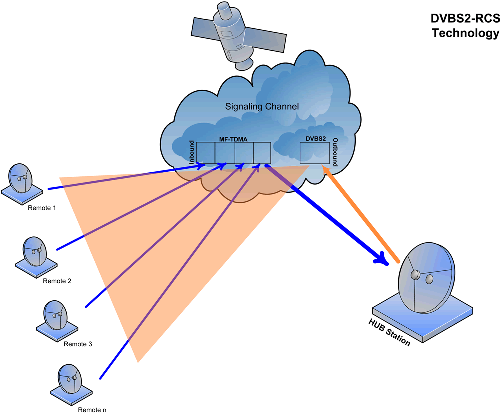DVB-RCS
DVB-RCS stands for Digital Video Broadcast – Return Channel Satellite.
DVB-RCS is part of the DVB standards for satellite communication, DVB-S and DVB-S2.
The purpose of DVB-RCS is to provide a return channel to enable Internet and other data services over satellite.
ViaSat’s LinkStar system is one of the VSAT satellite broadband implementations which support DVB-RCS.
The DVB standards are maintained by the DVB Project, which is an industry-led consortium of over 260 broadcasters, manufacturers, network operators, software developers, regulatory bodies and others in over 35 countries.
DVB-RCS is officially defined in ETSI EN 301 790: Digital Video Broadcasting (DVB); Interaction channel for satellite distribution systems.
The DVB-RCS standard is explained in ETSI EN 101 790: Digital Video Broadcasting (DVB);Interaction channel for Satellite Distribution Systems; Guidelines for the use of EN 301 790.
DVB standards are available on the web at the ETSI Publications Download Area.
The Future of DVB-RCS
DVB-RCS is competing against IPoS (IP over Satellite) and S-DOCSIS (Satellite – Data Over Cable Service Interface Specification).
As the cost of consumer terminals is the #1 criteria in the success of a internet over satellite technology, S-DOCSIS seems certain to become the dominant standard. S-DOCSIS systems are able to utilize inexpensive off-the-shelf components designed for the widely deployed DOCSIS networks.


Comments - No Responses to “DVB-RCS”
Sorry but comments are closed at this time.